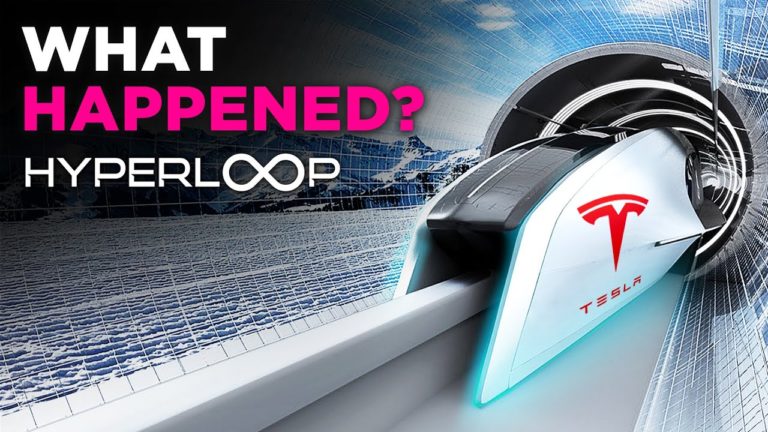HYPERLOOP Tesla Is Closer Than You Think ! What Happened?
The year is 2030. You’re in a sleek pod-like capsule that’s levitating inside a low pressure steel tube and traveling at speeds of over 600 miles per hour across the country. This is Hyperloop, the futuristic transportation system proposed by controversial US entrepreneur Elon Musk, which is based on 100-year-old principles that have been updated for the twenty-first century. Advocates claim the technology is more environmentally friendly than aeroplanes and substantially faster than high-speed trains. But is Hyperloop a feasible future mode of transportation, and can the challenges involved in making it a reality be overcome? In other words, would we ever be able to ride in one of these high-tech vehicles?
We will be taking a deep dive into what Hyperloop is and if we can still expect it.
Say hello to the future of high speed transportation. It’s three and a half times quicker than the Shinkansen bullet trains in Japan, and even faster than a Boeing 747. It’s a Hyperloop, magnetic pods levitating inside a tube at speeds of above 62 miles per hour. In principle, you could go from San Francisco to Los Angeles in 45 minutes for less than 100 dollars one way. With a successful human test trip in november 2020, we could be less than ten years away from seeing it in action.
Vacuum tube transit systems have been around for a surprising amount of time as a concept for quick transportation. Isambard Kingdom Brunel, a British engineer and the Elon Musk of his time, suggested building a tube in southwest England in 1845 that would move trains at a dizzying 70 miles per hour. Brunel’s plan was abandoned after the project became impracticable due to a shortage of materials that could support it.
Despite Brunel’s efforts, it took more than a century for SpaceX and Tesla CEO Elon Musk to turn the world’s attention back to tubular transit technology. The concept of the Hyperloop became widely popular in 2013, thanks to Elon Musk’s 58 page Hyperloop alpha paper which set out how a modern system would work and how much it would cost. He argued that his Hyperloop could be faster, safer, more affordable, and less disruptive to people living along the route. Musk said that the service could be the answer to travel between cities less than about 900 miles or 1500 km apart.
But how does the whole concert of a train in a tube work? Well, at its core, the Hyperloop technology is all about removing the two things that slow down regular vehicles, air resistance and friction. To do away with the latter, the pod must hover above its track, turning Hyperloop into a magnetic levitation, or maglev train.
Maglev is basically what allows a Hyperloop to go incredibly fast. To put it in the simplest terms, maglev trains have two sets of magnets. One set to move the floating train ahead, and another to repel and push the train up off the track, taking advantage of the lack of friction. The lack of friction between the passenger carrying pods and the tube shaped track is basically what allows the Hyperloop to travel super fast.
One of the most energy intensive aspects of high speed transport is overcoming air resistance. Airliners go to higher altitudes in order to pass through less dense air. To achieve a similar effect at ground level, Hyperloop encloses the capsules in a reduced pressure tube, effectively allowing the trains to move at plane speeds while staying on the ground.
So now that we’re all caught up to speed about what the Hyperloop system is, let’s take a look to see where Musk’s project stands at the moment.
Despite doing much to lay the foundation for the Hyperloop system, Musk initially said he was too busy to develop his own service.
There are now a number of companies working to turn the idea into reality, including startups and others who have been working on the idea for some time already. Among them are TransPod, Arrivo, HTT and Virgin Hyperloop One. Each is working on a somewhat different set of technologies, but the overall concept is the same.
Virgin Hyperloop was founded in 2014 with the goal of bringing Musk’s vision of a futuristic transportation system a reality. The company has made significant technical changes to Musk’s first design and has chosen not to pursue the Los Angeles to San Francisco route the billionaire envisioned. But, not all of Musk’s ideas were scrapped. Virgin still wants to keep the futuristic vehicle environmentally friendly, with vegan leather seats and some of the pod materials made from recycled content.
Do not forget to share your opinion with us to provide you with the best posts !




0 Comments